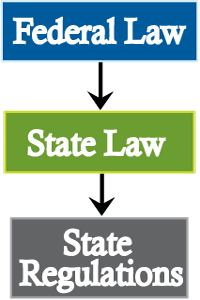To ensure you’re receiving the most up-to-date and accurate information, please choose the correct agency from the homepage. The DHEC website is no longer being updated and will be permanently unavailable Dec. 31, 2024.
Safe Drinking Water Act (Federal Law)
- A federal law which ensures safe drinking water for Americans
- Under this law the Environmental Protection Agency (EPA) sets standards for water quality of drinking water and oversees the states, localities, and water suppliers who implement those standards.
- EPA sets standards for approximately 90 contaminants in drinking water
State Safe Drinking Water Act (State Law)
- South Carolina state law that ensures safe drinking water for the citizens of South Carolina.
State Primary Drinking Water Regulations
- South Carolina State Regulations that implement and enforce the State Safe Drinking Water Act.
 National Primary Drinking Water Regulations
National Primary Drinking Water Regulations
- EPA requires public water systems to meet these standards.
- For a list of contaminants and their maximum contaminant levels (MCL), visit EPA's Drinking Water Contaminants Web site.
- Maximum Contaminant Level (MCL) is the highest level of a contaminant that is allowed in drinking water.
National Secondary Drinking Water Regulations (NSDWRs)
- NSDWRs are guidelines for 15 contaminants that may cause cosmetic or aesthetic effects in drinking water (i.e. skin or tooth discoloration, taste, odor, etc.), but pose no known health risk.
- The Environmental Protection Agency (EPA) recommends these secondary standards to public water systems, but does not require water systems to comply.
- States may choose to adopt secondary standards as enforceable standards.
- For more information, visit EPA's Secondary Drinking Water Regulations Web Site
Contacts
- Richard Welch, Jr. P.E., Manager, Drinking Water & Recreational Waters Compliance, (803) 898-3546
- Wendi Smith, Program Manager, Drinking Water Compliance Monitoring Section, (803) 898-2382